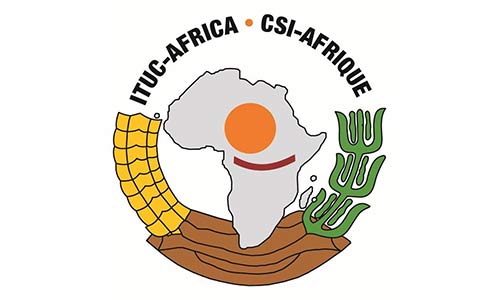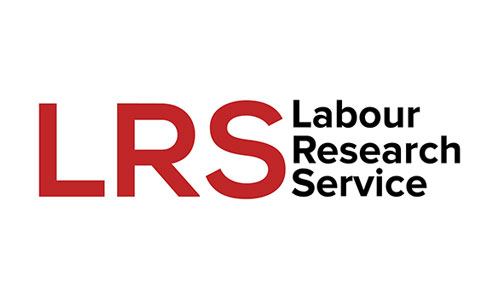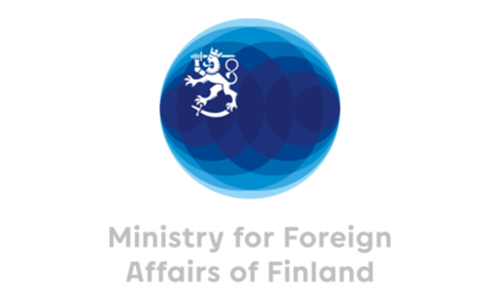Introduction
What has changed and what will happen next? First of all, the health crisis reveals some truths:
- It is obvious that nothing can ever be taken for granted and that humanity, despite its technical and technological progress, remains vulnerable to multifaceted crises that it cannot foresee.
- Globalisation, once seen as a panacea, has also revealed its weaknesses because interdependencies that were considered by many positive in the production of goods and services are in reality sources of vulnerability and dependence.
- Local needs, in terms of health, education, agriculture and food, energy, water, hygiene and sanitation, must be met at the local, national or regional level.
- The main thrusts of international solidarity and cooperation are not as real or as effective as has been assumed for years.
- As far as Africa is concerned, today more than ever, it must rely on itself, do things in its own way and build its own project in accordance with its strengths but also its weaknesses.
- The industrialisation of Africa and the development of endogenous production processes, based on the priority sectors mentioned above, are much more realistic than a hypothetical desire to catch up with others in sectors where it would be difficult for it to do so. What good is it for an African country to produce cars or receive millions of tourists in hotels financed by foreign investors if it must import all its food, medicines and books from abroad?
Given this new context, I think it is appropriate to reconsider the African Continental Free Trade Area (AfCFTA) to better see what to keep, what to change and what to let go of. Many said that we must move quickly in the implementation of the Agreement, as if it is from this implementation that the solution to all of Africa’s problems would come.
That should take into account the governance of the global economy, in particular the World Trade Organisation (WTO):
Before the massive destruction of economies by the global economic contamination of Covid-19, attempts to return to protectionism were already evident.
Some countries accused the United States of protectionism though some actions by other countries also resembled protectionism.
Long before Covid-19, more and more countries had begun to take actions that were contrary to WTO rules and disciplines. Multilateralism was clearly in the impasse.
This accelerated with the pandemic because when several countries realized their vertical vulnerability to global value chains – the famous adage that when China sneezes, the rest of the world catches a cold – they began to say they would relocate or repatriate strategic industries.
But the repatriation of strategic industries cannot be decreed. The only way it can be decreed indirectly is by erecting new customs barriers and unilaterally enacting standards that are not agreed or consensual.
As soon as a country moves in this direction, it becomes protectionist. And if everyone starts protectionism to protect their industries, a trade war will automatically take place.
After the WTO, there was also the proliferation of mega Regional Trade Agreements (RTAs) before COVID. The same push will likely return, especially at the regional level because States will tend to avoid over-dependence on global value chains in an attempt to favour shorter chains.
Reactions have already begun in Southeast Asia around many ASEAN countries. China, India and many other countries will also react in one way or another.
We also see new strategies from the European Union to bring Economic Partnership Agreements (EPAs) back to the forefront.
What should be Africa’s response? What should Africa do with the AfCFTA?
The crisis has come so quickly that it took everyone by surprise. So our perception of the notion of time or urgency when it comes to public policy must change.
Postponing implementation until January 2021 is necessary but not sufficient. For January 2021 has already arrived and we must not believe that States, which are struggling to cope with the economic crisis generated by Covid-19, will turn away from their current efforts to mitigate the effects of the health crisis.
In my opinion, a year would not be too much. It will allow enough time to discuss and deepen certain essential elements, including those that I said earlier that they should be “changed” if necessary.
Content of the AfCFTA
The AfCFTA is an ambitious agreement. 90% of tariff lines will be liberalised, with the remaining 10% divided between products to be excluded from liberalisation (3%) and sensitive products to be liberalised gradually (7%).
Least Developed Countries (LDCs) will have 10 years to liberalise the 90% tariff lines and 13 years for the 7% of sensitive products. On the other hand, developing countries will liberalise the 90% of products over 5 years and the 7% of sensitive products over 10 years.
As regards services, the negotiators agreed to substantially eliminate restrictions and other discriminatory measures affecting trade between the signatory African countries. They also indicated that no sector would be excluded nor any mode of service provision.
The second phase will cover investment, competition and intellectual property. These subjects are of crucial importance to African countries. But their treatment should take into account the international environment, particularly the discussions that are being conducted at the WTO. But as you know, the WTO itself does not know where it is going.
The commitments to be made on these subjects will be at the heart of industrialisation and structural transformation policies on the African continent. They will also be closely linked to issues such as trade facilitation and electronic commerce, currently at the centre of discussions at the WTO, among others.
Outstanding issues and remaining challenges
Negotiation Issues
The outstanding issues are still too numerous and too important to be treated lightly. If we consider even the 11 core issues identified by the 33rd session of Heads of State last February, we can better gauge the scale of the challenge.
- Finalisation of the ongoing negotiations on rules of origin
- Preparation and submission of the list of tariff concessions for trade in goods
- Preparation and submission of schedules of specific commitments for trade in services
- Preparation of regulatory frameworks for the services sectors (all)
- Incorporation of the AfCFTA agreement into national laws, including publication of schedules of tariff concessions and specific commitments
- Production and dissemination of trade documents
- Designation of national AfCFTA focal points to AfCFTA implementing institutions
- Establishment of national committees for the implementation of the agreement, and development of national strategies and related institutions
- Establishment of customs management systems and procedures, policy and legislative alignment measures, and complementary and facilitative measures
- Undertake AfCFTA popularisation and capacity building activities
- Coordinate the implementation and monitoring of the AfCFTA.
Regional Challenges
Despite the ambition attached to it, the AfCFTA still has some concerns to resolve with the processes of integration into the Regional Economic Communities (RECs), in terms of coherence. It has already been said that the AfCFTA will reinforce the acquis and the regions that are quite advanced in terms of trade opening will keep their level of ambition, but it is not clear how this is to be done.
In the Economic Community of West African States (ECOWAS), for example, the AfCFTA is linked to a Common External Tariff (CET), which is being implemented since 2015 and which organises ECOWAS external trade, including other African countries, and a Trade Liberalisation Scheme (ETLS) which provides a preferential regime for approved community companies. All goods originating from ECOWAS, the origin being determined by certain criteria, enter without duties or quotas in the other ECOWAS countries. This was not the case for other African countries until now.
These trade policy instruments are not fully applied because restrictive and protectionist measures still exist in ECOWAS in some countries. There are also multifaceted non-tariff barriers that prevent regional trade from being fully realized. Adding the imperfect implementation of the AfCFTA to imperfect implementation of ETLS and CET will create two challenges that need to be managed.
It will therefore be necessary to review the ECOWAS rules of origin to take account of those of the AfCFTA. It is also necessary to adapt the dispute settlement mechanisms of the AfCFTA to the ECOWAS mechanism which was based more on political than legal arrangements.
Per Article 85 of the Revised ECOWAS Treaty, Member States have submitted their contributions on the market access offer for the consolidation of entries prior to decision making by ECOWAS Member States.
Thus, ECOWAS has proposed an exclusion list of 184 tariff lines under the HS 2017 version.
To these challenges is also added the EPA which is being implemented by Cote d’Ivoire and Ghana with the consequences that we know.
Which approach for which objectives?
Who can hope that these issues can be dealt with in less than 6 months without being botched? This is not about running headlong into the AfCFTA. It is about knowing why we are going there and walking with a firm, resolute and prudent step to achieve the results we all hope for.
While political leadership has done much to move the AfCFTA forward, politics alone should not lead the debate. It is time to take into account technical considerations and the internal and external environment to ensure that the decisions to be made are reasonable.
But there is a need for in-depth evaluation, including of what has already been negotiated, to see how and in what way it would correspond to the new post-covid ambitions and strategies that Africa should adopt.
The AfCFTA has the ambition to develop intra-African trade, which is an excellent initiative. However, intra-regional trade or participation in the development of regional value chains cannot be decreed. Rather, opportunities should be created to make this happen.
Developing intra-African trade within the framework of regional economic integration in Africa primarily means integrating trade in Africa. For this to happen, operators must have reasons to trade. Those who produce must be able to meet the needs of their target markets, at quality and price levels that are in line with the expectations of these markets.
We must therefore start with the real issues:
To take advantage of Africa’s economic weight:
- Stimulate the industrialisation of Africa in line with the 2063 agenda
- Intra-Africa Trade Facilitation which is not the same as WTO Trade Facilitation Agreement (TFA)
- Building regional value chains in agro-food products and priority sector for Africa: health, food and agriculture, education, green energy, digital economy, etc.
- Invest massively in job creation for youth
- Ensuring coherence in Africa’s trade policy and agreement by, for instance, suspending EPAs and other agreements involving African countries that are also involved in the AfCFTA.
We need to know that we are not going to find the world where we left it. This crisis must change our perspective. Focus on the economy of life. The real economy. The economy for Africa not Africa for the global economy.
* This article is re-published from Third World Network Africa. View the original article here.
Also read:
Dr Cheikh Tidiane Dieye
Dr Cheikh Tidiane Dieye is Director of Centre Africain pour le Commerce, l’Intégration et le Développement (CACID). Dr Dieye has deep expertise in trade and sustainable development, regional integration and international trade negotiations, both on substantive issues and on negotiation processes and techniques.




